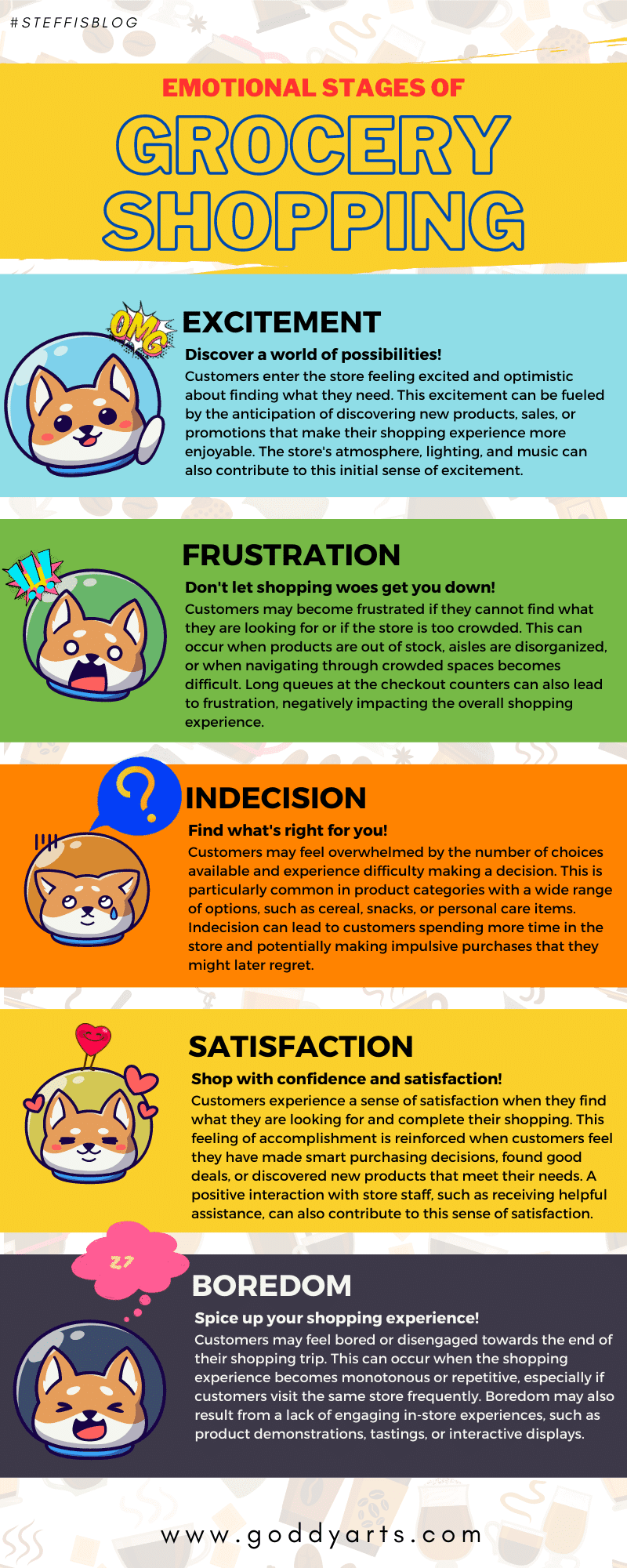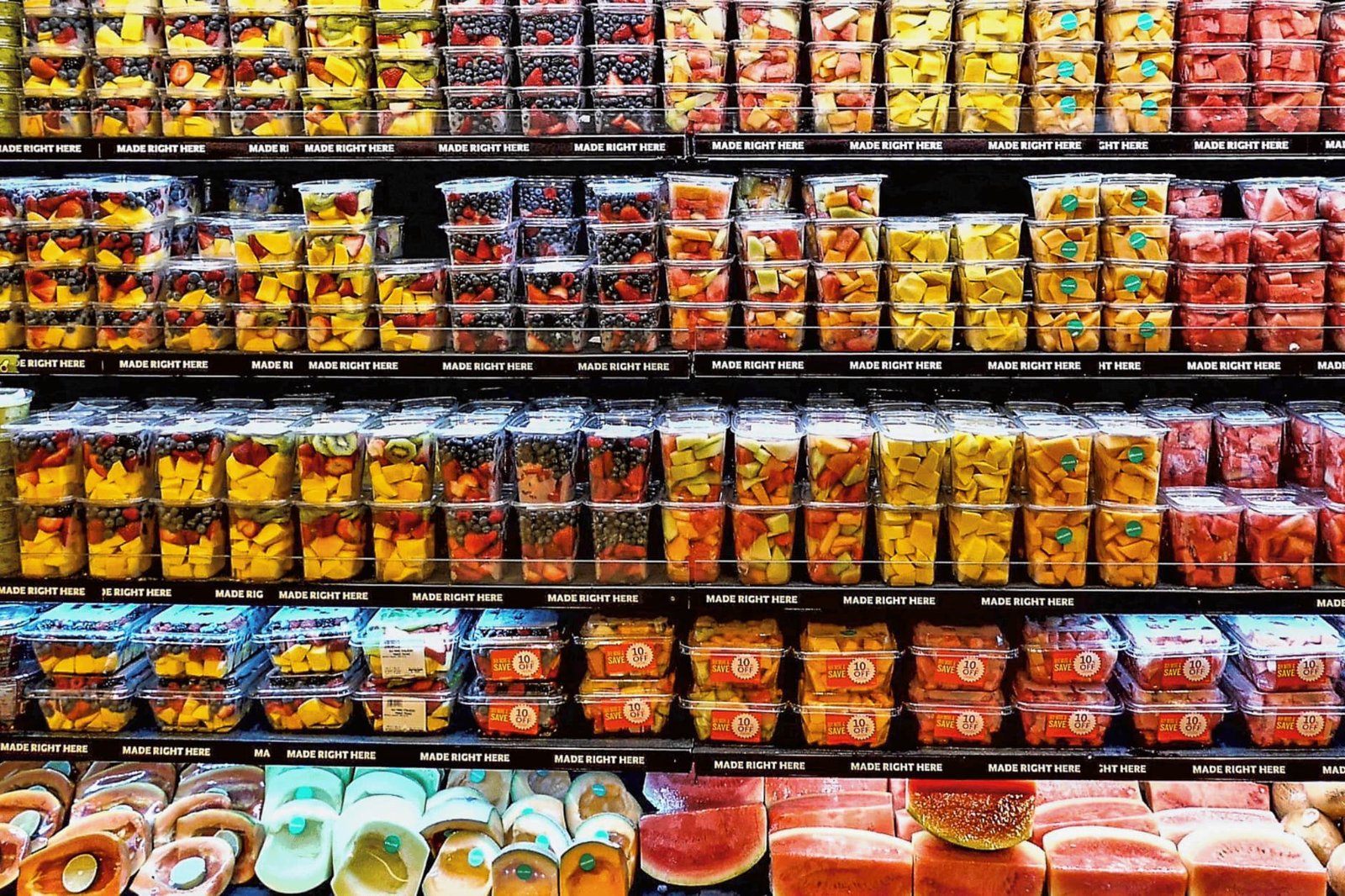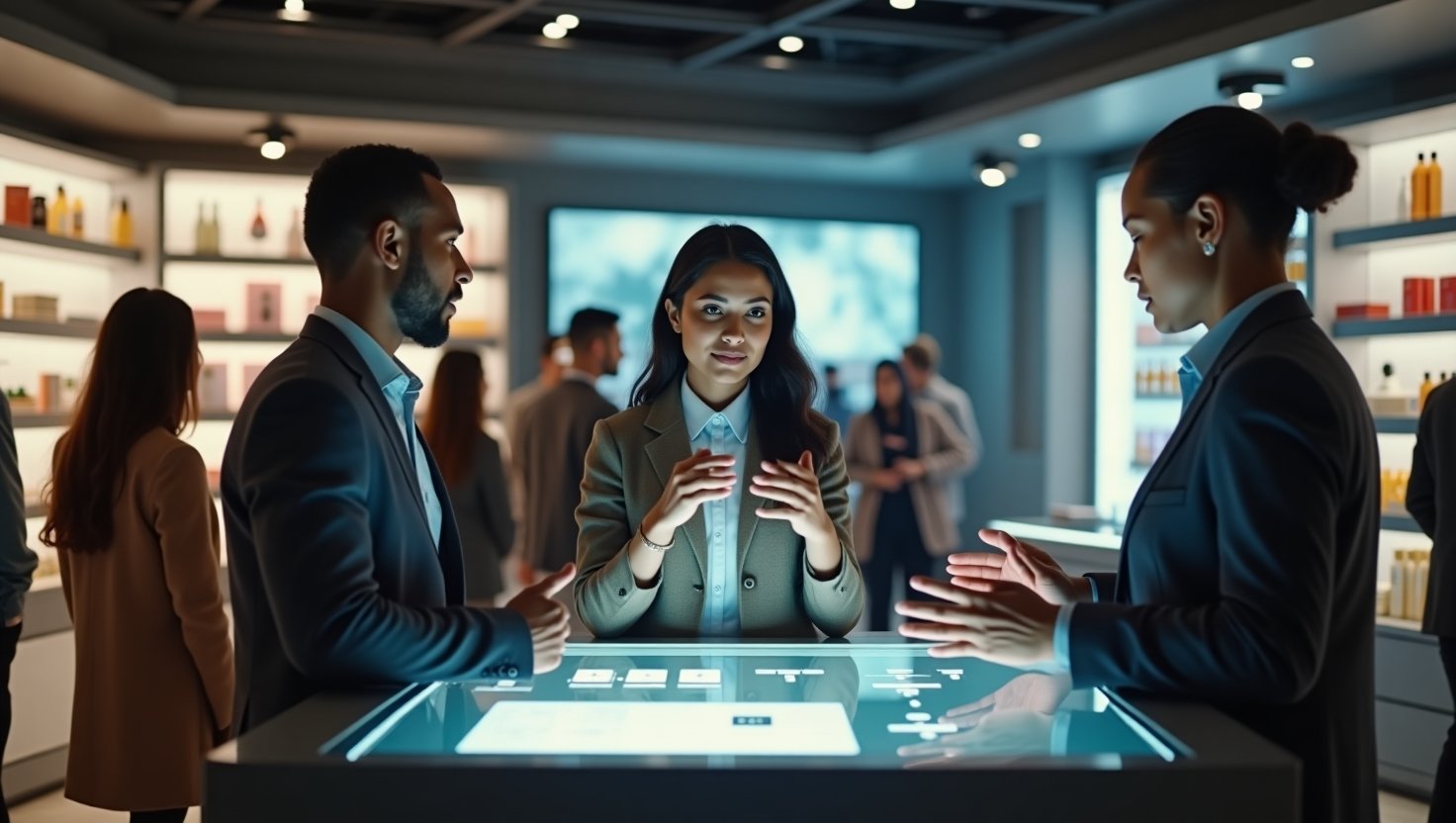As someone who has spent countless hours wandering the aisles of supermarkets, I can attest to the fact that there is much more to supermarket shopping than just price and convenience. In fact, the role of emotions in supermarket shopping is a topic that is often overlooked, yet it can have a significant impact on our purchasing decisions.
Emotions play a vital role in shaping our shopping behavior, and they can drive us to make purchases that we may not have intended to make. For example, have you ever found yourself buying a bag of chips or a candy bar at the checkout counter, even though you had no intention of doing so when you entered the store? That’s the power of emotions in action.
Moreover, emotions can also play a significant role in creating a positive or negative customer experience. The way a store looks, the music that is played, and the interactions we have with store personnel can all contribute to our overall emotional state and impact our shopping behavior.
That’s why understanding the role of emotions in supermarket shopping is essential for both consumers and retailers. By understanding how emotions influence our behavior, we can make better purchasing decisions, while retailers can use this knowledge to create a better shopping experience and drive sales.
In the following sections of this blog post, we’ll explore in detail the impact of emotions on shopping behavior, the emotional appeals used in supermarket marketing, how to create a positive customer experience, the role of emotional connections in building brand loyalty, and the science of emotions and supermarket shopping.
The impact of emotions on shopping behavior
Emotions can play a significant role in our shopping behavior, and they can influence the decisions we make while in a store. When we experience positive emotions, such as happiness or excitement, we are more likely to make impulsive purchases. On the other hand, negative emotions, such as stress or anxiety, can lead to cognitive dissonance, which is the feeling of discomfort that arises when we hold conflicting beliefs or values.
For example, if we are stressed out because we are running late for a meeting, we may be more likely to make impulsive purchases to alleviate our stress. This can lead to cognitive dissonance because we may feel guilty about spending money on items we don’t need.
Moreover, emotions can also impact our perception of value. When we experience positive emotions, we are more likely to perceive the value of a product as higher than it actually is. Conversely, negative emotions can lead us to perceive the value of a product as lower than it actually is.
Retailers can use this knowledge to their advantage by using emotional appeals to drive sales. For example, they can use bright and vibrant colors to create a sense of excitement and energy, or they can use calming colors to create a sense of relaxation and peace.

Understanding the impact of emotions on shopping behavior is crucial for both consumers and retailers. By understanding how emotions can influence our behavior, we can make better purchasing decisions, and retailers can use this knowledge to create a better shopping experience and drive sales.
Supermarket marketing and emotional appeals
Supermarket marketing has evolved over the years, and today, emotional appeals are a crucial aspect of it. Companies use a range of strategies to appeal to customers’ emotions, and product packaging is one of the most effective ones.
Product packaging is designed to evoke specific emotions in customers. For example, bright and colorful packaging can create a sense of excitement and playfulness, while minimalist packaging can create a sense of sophistication and elegance. By playing on customers’ emotions, companies can influence their purchasing decisions and increase sales.
Sensory marketing is another strategy used by supermarkets to appeal to customers’ emotions. It involves creating an atmosphere that appeals to customers’ senses, such as sight, smell, and sound. By creating an immersive experience, supermarkets can create a positive emotional response in customers, which can, in turn, drive sales.
Atmospherics is an essential aspect of sensory marketing. It involves manipulating the store environment to create a specific mood or atmosphere. For example, playing calming music and using warm lighting can create a relaxed and comfortable atmosphere, while bright lighting and upbeat music can create a lively and energetic atmosphere. The use of atmospherics can influence customers’ emotional state, which can impact their shopping behavior.
| Emotional Appeal | Description | Example |
|---|---|---|
| Scarcity | Creating a sense of urgency by emphasizing limited availability | “Only 2 left in stock” |
| Fear of Missing Out (FOMO) | Creating a fear of not having something desirable | “Limited time offer – don’t miss out!” |
| Social Proof | Using peer influence to encourage purchases | “Our best-selling product” |
| Authority | Using expert opinions or celebrity endorsements to encourage purchases | “Recommended by Dr. Zacharia” |
| Reciprocity | Offering something in return for a purchase | “Free gift with purchase” |
| Guilt | Creating a sense of guilt if a purchase isn’t made | “Help feed the hungry with your purchase” |
| Curiosity | Creating a desire to learn more | “What’s inside this mystery box?” |
| Sense of Belonging | Creating a sense of community or inclusion | “Join our loyalty program and become part of our family” |
| Instant Gratification | Offering immediate rewards for a purchase | “Buy one, get one free” |
| Nostalgia | Tapping into sentimental memories or feelings of nostalgia | “Taste the classic flavor you loved as a child” |
| Personalization | Offering personalized or customized products | “Create your own custom pizza” |
| Hope | Creating a positive outlook for the future | “Invest in your future with this product” |
| Value | Emphasizing the value or savings of a product | “Get twice as much for the same price” |
| Luxury | Creating a sense of exclusivity or luxury | “Indulge in the finest ingredients” |
| Comfort | Creating a sense of comfort or familiarity | “Taste the homemade goodness” |
| Health | Emphasizing the health benefits of a product | “Eat healthier with our low-fat options” |
| Beauty | Emphasizing the aesthetic appeal of a product | “Feel beautiful with our makeup collection” |
| Entertainment | Creating a sense of fun or entertainment | “Get the party started with our selection of snacks and drinks” |
| Safety | Emphasizing the safety or security of a product | “Protect your family with our security system” |
| Sustainability | Emphasizing environmentally-friendly or sustainable products | “Reduce your carbon footprint with our eco-friendly products” |
In short, emotional appeals are a crucial aspect of supermarket marketing, and companies use a range of strategies to appeal to customers’ emotions. By playing on customers’ emotions, supermarkets can influence their purchasing decisions, create a positive shopping experience, and ultimately increase sales. By understanding the role of emotional appeals in supermarket marketing, customers can make more informed purchasing decisions, while retailers can create a more engaging and immersive shopping experience.
Creating a Positive Customer Experience
Have you ever walked into a supermarket and immediately felt stressed or overwhelmed? Perhaps the store was overcrowded, the lighting was harsh, or the aisles were cluttered. Whatever the reason, a negative shopping experience can leave a lasting impression and may even deter us from returning to that store in the future.
On the other hand, a positive shopping experience can be a powerful driver of customer loyalty. It can make us feel valued, appreciated, and eager to return to the store again and again. That’s why creating a positive customer experience is crucial for supermarkets that want to build lasting relationships with their customers.

One way to create a positive customer experience is to ensure that the store is clean, well-organized, and easy to navigate. When aisles are cluttered, and products are hard to find, it can be frustrating for shoppers and make them feel anxious. On the other hand, a well-organized store can make shopping more enjoyable and less stressful.
Another critical element in creating a positive customer experience is the overall atmosphere of the store. Factors such as lighting, music, and even the scent of the store can impact our emotional state and contribute to our overall shopping experience. For example, research has shown that certain scents can reduce stress and increase our willingness to spend money.
Moreover, the way that store personnel interact with customers can also impact our emotional state and contribute to our shopping experience. When employees are friendly, helpful, and attentive, it can make us feel valued and appreciated. On the other hand, negative interactions with store personnel can leave us feeling frustrated and unhappy.
| Impact Strategy | Description | Example |
|---|---|---|
| Friendly Customer Service | Train staff to be welcoming, helpful, and knowledgeable. | Greeting customers with a smile, offering assistance, and answering questions. |
| Clear Signage and Layout | Use clear signage and intuitive layout to make it easy for customers to find what they need. | Organizing products in logical categories, using clear signage, and providing maps of the store. |
| Pleasant Ambient Atmosphere | Use music, lighting, and scent to create a pleasant atmosphere in the store. | Playing calming music, using soft lighting, and diffusing pleasant scents. |
| Personalization | Tailor promotions and product recommendations to individual customers’ needs and preferences. | Offering personalized promotions based on customers’ past purchases and preferences. |
| In-store Experiences | Offer in-store experiences that engage customers and make shopping more enjoyable. | Hosting events, providing product demonstrations, and offering samples. |
| Fast Checkout | Ensure that checkout lines move quickly and efficiently to reduce customer wait times. | Using express checkout lanes, scanning barcodes quickly, and processing payments efficiently. |
| Fresh and Well-Stocked Products | Keep products fresh, well-stocked, and organized to make shopping more convenient. | Rotating products regularly, restocking shelves frequently, and keeping products organized. |
| Easy Return Policy | Make it easy for customers to return products with a clear and hassle-free return policy. | Providing a no-questions-asked return policy, offering refunds and exchanges, and simplifying the return process. |
| Loyalty Programs | Reward customers for their loyalty with personalized discounts and perks. | Offering exclusive discounts, free products, and other rewards for frequent shoppers. |
| Online and Mobile Presence | Create a seamless online and mobile presence to complement the in-store experience. | Offering online shopping, mobile apps, and a responsive website that integrates with in-store promotions. |
| Special Offers | Create limited-time offers that encourage customers to try new products or stock up on favorites. | Offering buy-one-get-one-free promotions, discounts for bulk purchases, and limited-time sales. |
| Community Engagement | Engage with the local community to build brand awareness and loyalty. | Hosting charity events, sponsoring local teams or organizations, and donating to local causes. |
| Product Education | Educate customers about products to help them make informed decisions. | Providing detailed product information, offering samples, and displaying product reviews. |
| Social Media Presence | Use social media to connect with customers, showcase products, and offer exclusive promotions. | Sharing photos and videos of products, responding to customer inquiries, and offering social media-exclusive promotions. |
| Green Initiatives | Implement sustainable practices and initiatives that resonate with customers who prioritize the environment. | Offering reusable shopping bags, using energy-efficient lighting, and partnering with environmentally-conscious organizations. |
| Targeted Advertising | Use targeted advertising to reach the right customers with the right message at the right time. | Using data analytics to identify customer preferences and targeting them with personalized promotions. |
| Convenience | Make shopping as convenient as possible by offering services like home delivery and curbside pickup. | Offering online ordering with home delivery or curbside pickup, providing express checkout options, and offering parking near the entrance. |
| Visual Appeal | Create a visually appealing environment that makes shopping more enjoyable. | Using attractive displays, incorporating colorful branding, and arranging products in aesthetically |
And so, creating a positive customer experience is critical for supermarkets that want to build lasting relationships with their customers. By ensuring that the store is clean, well-organized, and easy to navigate, and by paying attention to factors such as lighting, music, and employee interactions, supermarkets can create an environment that is welcoming and enjoyable for customers. When customers feel valued and appreciated, they are more likely to return to the store and recommend it to others.
Building brand loyalty through emotional connections
Building brand loyalty is a crucial goal for any retailer, and emotional connections can play a significant role in achieving this objective. By establishing emotional connections with customers, retailers can create brand loyalty that lasts long after a single transaction.
Emotional connections are formed when customers feel a personal connection with a brand or product, and this connection is often based on shared values or experiences. For example, a customer may feel a strong emotional connection to a brand that promotes sustainability, as they share the same values and beliefs.

However, emotional connections can also be formed through positive experiences with a brand or product. If a customer has a positive experience with a particular brand, they are more likely to feel an emotional connection with that brand and become a loyal customer.
Retailers can use a variety of strategies to establish emotional connections with customers, including creating personalized experiences, storytelling, and engaging with customers on social media. For example, a retailer may create a personalized shopping experience by offering tailored recommendations based on a customer’s purchase history. By doing so, the retailer can create a positive emotional experience for the customer, which can lead to brand loyalty.
Psychological pricing is another strategy that can be used to establish emotional connections and build brand loyalty. Psychological pricing refers to the practice of using pricing strategies that appeal to customers’ emotions and perceptions, rather than just the objective price of a product. For example, setting the price of a product at $9.99 instead of $10.00 can create the perception that the product is less expensive and a better value, leading to a positive emotional response from the customer.
| Strategies | Description | Example |
|---|---|---|
| Create a Sense of Community | Foster a feeling of belonging and connectedness among customers. | Offering cooking classes or community events in-store. |
| Be Authentic | Build trust and credibility with customers by being genuine and transparent. | Sharing the story behind a product or brand with customers. |
| Provide Excellent Customer Service | Go above and beyond to make customers feel valued and appreciated. | Offering personalized recommendations or remembering a customer’s preferences. |
| Use Personalization | Tailor the shopping experience to each individual customer. | Offering customized products or personalized promotions based on purchase history. |
| Appeal to Customers’ Values | Align with customers’ values and beliefs to create an emotional connection. | Partnering with a charity or promoting sustainability. |
| Create an Emotional Connection with Packaging | Use packaging design and messaging to evoke positive emotions. | Using bright colors or playful language on packaging. |
| Use Emotional Storytelling | Share stories that create an emotional connection with customers. | Telling the story of a local producer or highlighting a unique ingredient. |
| Create a Sense of Nostalgia | Evoke feelings of nostalgia to create a sense of comfort and familiarity. | Offering classic snacks or playing retro music in-store. |
| Create a Sense of Excitement | Use limited-time offers or exclusive products to create a sense of excitement. | Offering seasonal or specialty products for a limited time. |
| Offer Rewards Programs | Encourage repeat purchases and build loyalty through rewards programs. | Offering discounts or free products for frequent shoppers. |
| Provide Convenience | Make the shopping experience as easy and convenient as possible. | Offering online ordering and delivery or curbside pickup. |
| Use Social Media | Connect with customers on social media to build relationships and create brand advocates. | Sharing user-generated content or hosting social media contests. |
| Offer a Unique Experience | Differentiate from competitors by offering a unique shopping experience. | Offering interactive displays or unique product demonstrations. |
| Use Scent | Use scents to create a positive emotional response in customers. | Using scented candles or diffusers in-store. |
| Create a Sense of Urgency | Create a sense of urgency to encourage customers to make a purchase. | Offering limited-time discounts or using language that conveys urgency in promotions. |
| Use Music | Use music to create a specific atmosphere and evoke emotions in customers. | Playing calming music in a wellness section or upbeat music in a snack aisle. |
| Foster Customer Feedback | Encourage customers to provide feedback and take their opinions into account. | Offering surveys or comment cards for customer feedback. |
| Highlight Employees | Highlight employees to create a sense of personal connection with customers. | Featuring employee stories or offering employee recommendations. |
| Create a Sense of Luxury | Use high-end products and experiences to create a sense of luxury and exclusivity. | Offering premium products or services with added benefits. |
| Create a Sense of Fun | Use humor and playfulness to create a lighthearted and enjoyable shopping experience. | Offering games or contests in-store. |
In short, emotional connections can lead to brand loyalty, and retailers can use a variety of strategies, including personalized experiences, storytelling, and psychological pricing, to establish these connections. By doing so, retailers can create a loyal customer base that will continue to support their brand long into the future.
The Science of Emotions and supermarket shopping
Neuromarketing is a relatively new field that uses brain science to understand how consumers respond to marketing stimuli. It has provided us with a wealth of knowledge about the role of emotions in shopping behavior.
One of the key insights from neuromarketing is that emotions are the primary driver of purchasing decisions. When we experience positive emotions while shopping, such as pleasure or excitement, we are more likely to make a purchase. Conversely, negative emotions like frustration or anxiety can lead to us avoiding a product or leaving the store altogether.
Neuromarketing has also shown that the brain processes information on both a conscious and unconscious level. While we may be aware of some of the factors that influence our shopping behavior, such as price and product features, there are many other factors that we may not be consciously aware of, such as the music being played in the store or the scent of a particular product.

To better understand these unconscious factors, researchers use a variety of techniques such as eye tracking, facial coding, and EEG (electroencephalography) to measure brain activity. By studying how consumers respond to different stimuli, researchers can identify which emotions are most strongly associated with certain products or brands.
Consumer psychology is another field that has shed light on the role of emotions in supermarket shopping. It is concerned with understanding how consumers make decisions and what motivates them to buy. For example, studies have shown that consumers are more likely to buy products that are associated with positive emotions, such as happiness or excitement.
In addition, consumer psychology has also shown that consumers often use heuristics or mental shortcuts when making purchasing decisions. One such heuristic is the use of social proof, which involves relying on the opinions of others when making a decision. This is why reviews and ratings are so important in the online shopping experience.
| Neuromarketing Strategies | Description | Example |
|---|---|---|
| Anchoring | Setting a high price for a product to make a slightly lower price seem like a better deal. | A store lists a designer handbag at $1,000, but then places it on sale for $700, making the customer feel like they got a great deal. |
| Social Proof | Using the power of social influence to convince customers to make a purchase. | A store displays a sign that says “Best-Selling Product” next to a particular item, making customers more likely to buy it. |
| Scarcity | Creating a sense of urgency by making a product seem limited or rare. | A store advertises a limited-time only sale on a popular item, making customers feel like they need to act fast before it’s gone. |
| Priming | Using subtle cues to influence customers’ purchasing decisions. | A store plays calming music to create a relaxed atmosphere, making customers more likely to spend time browsing and making purchases. |
| Product Placement | Strategically placing products to draw customers’ attention and increase sales. | A store places popular items at eye-level or in prominent displays to make them more noticeable to customers. |
| Color Psychology | Using colors to evoke certain emotions and influence purchasing decisions. | A store uses warm, inviting colors like red and orange in the bakery section to stimulate customers’ appetites and encourage purchases. |
| Smell Marketing | Using scents to create an emotional connection with customers and increase sales. | A store diffuses the scent of freshly baked cookies to create a comforting and inviting atmosphere. |
| Product Bundling | Offering complementary products together to encourage larger purchases. | A store offers a “meal deal” that includes a sandwich, chips, and a drink at a lower price than if each item was purchased separately. |
| Free Samples | Allowing customers to try products before buying to increase sales. | A store offers free samples of a new food product, giving customers a chance to taste it and potentially purchase it. |
| Pricing Strategies | Using pricing techniques to influence customer perceptions of value. | A store uses odd-number pricing (e.g. $4.99 instead of $5.00) to make products seem cheaper and more appealing. |
| Personalization | Using customer data to tailor marketing messages and promotions to individual customers. | A store sends personalized email offers to customers based on their past purchases and preferences. |
| Point-of-Sale Promotions | Offering last-minute promotions at the checkout counter to encourage impulse purchases. | A store displays small, inexpensive items like candy or magazines at the checkout counter to encourage last-minute purchases. |
| Storytelling | Using compelling narratives to create emotional connections with customers and increase brand loyalty. | A store highlights the origin story of a particular product or brand to make it more relatable and interesting to customers. |
| Branding | Creating a strong brand identity to differentiate from competitors and increase customer loyalty. | A store uses consistent branding elements like logos, colors, and messaging to create a recognizable and memorable brand identity. |
| Celebrity Endorsements | Using celebrities to promote products and increase their perceived value. | A store features a celebrity in a commercial or print ad for a particular product, making customers more likely to purchase it. |
| Cross-Selling | Encouraging customers to purchase additional items related to their original purchase. | A store suggests a wine pairing for a particular food item, encouraging customers to purchase both items together. |
| Emotional Advertising | Using emotional appeals in advertising to create connections with customers and increase brand loyalty. | A store creates a heartwarming commercial that tugs at customers’ emotions, making them more likely to remember and connect with the brand. |
| Gamification | Adding game-like elements to shopping experiences to increase engagement and encourage purchases. | A store creates a scavenger hunt or quiz that customers can participate in while shopping, incentivizing them with discounts or prizes. |
| User-Generated Content | Encouraging customers to share their experiences and opinions on social media to increase brand visibility and credibility. | A store creates a social media campaign asking customers to share photos of themselves using the store’s products, and shares the best posts on their own social media accounts. |
Today, neuromarketing and consumer psychology have provided us with a wealth of knowledge about the role of emotions in supermarket shopping. By understanding how emotions influence our behavior, retailers can create a more positive shopping experience, while consumers can make better purchasing decisions.
Final Thoughts
In conclusion, it’s clear that emotions play a crucial role in supermarket shopping. From influencing our purchasing decisions to shaping our overall customer experience, emotions have a significant impact on how we behave in stores.
As consumers, it’s important to be aware of how emotions can drive our shopping behavior and to make conscious decisions based on our needs rather than our emotions. By doing so, we can avoid making impulse purchases that we may regret later on.
At the same time, retailers have a responsibility to create a positive shopping experience for their customers. This means paying attention to details such as the store’s layout, lighting, music, and personnel interactions to ensure that customers feel comfortable, valued, and engaged. By creating a positive emotional environment, retailers can build customer loyalty, drive sales, and differentiate themselves from competitors.
Finally, it’s worth noting that the study of emotions and supermarket shopping is a rapidly evolving field. With advances in technology and the rise of neuromarketing, we can expect to see even more research into the role of emotions in shopping behavior. By staying up-to-date with the latest insights and trends in this field, both consumers and retailers can continue to improve the supermarket shopping experience.
Overall, it’s clear that beyond price and convenience, emotions are a critical factor in supermarket shopping. By understanding and leveraging the power of emotions, we can create a more enjoyable, satisfying, and meaningful shopping experience for everyone involved.










